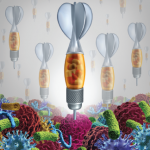The advantage of the DAREA was that the physician didn’t need to use a calculator. “You could even [summarize the numbers] in your head,” says Dr. Smolen, “and you wouldn’t even need a pencil or pen.” Then the team wondered if the index would also work for clinical practice in RA. The SDAI was tested and validated in the leflunomide dataset as well as two additional datasets by the Vienna team and other authors.2-5 “We were surprised,” says Dr. Smolen, “how extremely consistent the correlation between all the scores were when this simplified disease activity index was compared to other measures, such as the DAS-28.”
Career Timeline
1974 – Earns MD from the University of Vienna.
1976 – Completes fellowship at the University of Vienna Institute of Immunology.
1981 – Completes fellowship at the NIH.
1982 – Completes residency at the University of Vienna.
1983 – Becomes head of the rheumatology section at the second Dept. of Medicine, University of Vienna.
1985 – Becomes associate professor of clinical immunology.
1987 – Becomes associate professor of internal medicine.
1989 – Becomes chair of the second Dept. of Medicine, University of Vienna.
1991 – Becomes chair of EULAR.
1995 – Becomes professor of internal medicine (rheumatology) and chair of clinical rheumatology at the Medical University of Vienna.
SDAI One Step Further
To continue to streamline clinical assessments, Drs. Smolen and Aletaha went a step further with their disease activity index: they tested whether CRP contributed importantly to the SDAI, and their analyses justified elimination of CRP in the calculation. Physicians would no longer have to wait for lab results of acute phase reactants. They could immediately score their patients’ disease activity and make treatment decisions based upon this calculation. When the team began to analyze the validity of this index, “we were very surprised, again,” recalls Dr. Smolen, “that this simple numerical summation of the 28 swollen and tender joint counts, along with the patient and evaluator global disease activity assessment [0 to 10 on the Visual Analogue Scale], yielded a very reliable score that was sensitive to change.”6
Continued investigations by Dr. Aletaha in concert with Dr. Smolen have revealed yet another advantage of the CDAI: “It has been especially in the recent years where we have realized, with the new therapies, that remission could be achieved,” notes Dr. Smolen. “It turns out that the SDAI and the CDAI were the most stringent composite scores to assess remission.”

